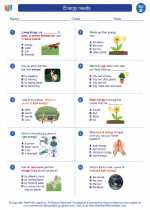Snow: An Exploration of a Unique Form of Precipitation
Snow is a form of precipitation that occurs in the atmosphere when water vapor condenses directly into ice crystals. These ice crystals then combine to form snowflakes, which can vary in shape and size depending on the temperature and humidity of the air. Snow is a fascinating natural phenomenon that has a significant impact on the environment and the lives of many living organisms.
Key Facts about Snow:
- Snow forms when water vapor in the atmosphere condenses directly into ice crystals.
- Snowflakes can have diverse shapes and sizes, ranging from simple hexagonal crystals to complex, branched structures.
- The color of snow is often white, due to the scattering of light by the ice crystals, but it can appear different colors due to impurities or environmental factors.
- Snowfall is a crucial source of fresh water for many ecosystems and human communities, especially in regions where it accumulates as snowpack and later melts into rivers and streams.
- Snow has a significant impact on the environment, influencing temperature regulation, habitat structure, and the water cycle.
Study Guide for Snow:
1. How is snow formed?
Snow is formed when water vapor in the atmosphere condenses directly into ice crystals. These ice crystals aggregate to form snowflakes, which then fall to the ground as snow.
2. What factors influence the shape and size of snowflakes?
The temperature and humidity of the air play a significant role in determining the shape and size of snowflakes. Lower temperatures and higher humidity levels can lead to the formation of larger, more intricate snowflakes.
3. Why does snow appear white?
The color of snow is often white because the complex structure of ice crystals scatters light, resulting in a white appearance. However, impurities and environmental factors can cause snow to appear different colors, such as blue or pink.
4. How does snow contribute to the water cycle?
Snowfall contributes to the water cycle by accumulating as snowpack in certain regions. As the snowpack melts, it releases water, contributing to the flow of rivers and streams, and providing a crucial source of fresh water for ecosystems and human communities.
5. What are some of the environmental impacts of snow?
Snow has significant environmental impacts, influencing temperature regulation, habitat structure, and the water cycle. For example, the presence of snow can insulate the ground and affect the distribution of plant and animal species in a given area.
Through this study guide, you can gain a deeper understanding of the formation, characteristics, and impacts of snow, which is a fascinating aspect of the natural world.
[Snow] Related Worksheets and Study Guides:
.◂Science Worksheets and Study Guides Second Grade. Energy needs

 Worksheet/Answer key
Worksheet/Answer key
 Worksheet/Answer key
Worksheet/Answer key
 Worksheet/Answer key
Worksheet/Answer key
